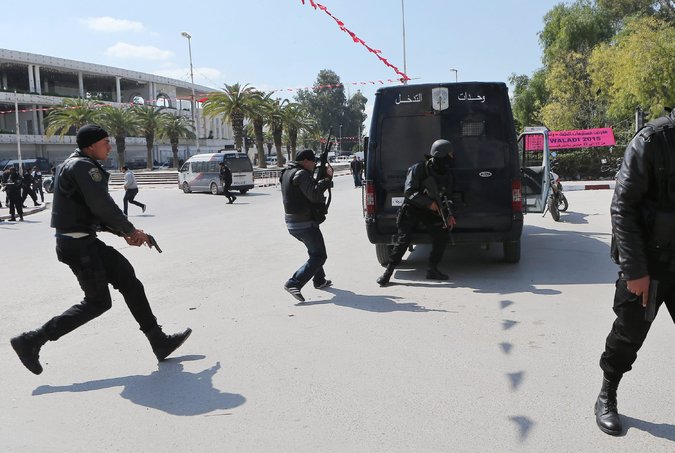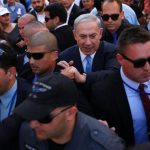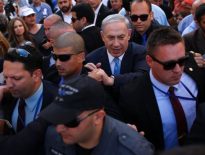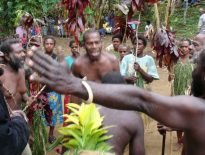CAIRO — Gunmen in military uniforms attacked an art museum in downtown Tunis around noon on Wednesday, killing nine people and taking hostages, officials said. Security forces later advanced into the museum and killed two gunmen in a firefight, state television reported.

Tunisian authorities said midafternoon that the operation to retake the museum was continuing but was nearly complete.
Early reports said that there were two or three gunmen, and that the civilians who were killed included seven foreign visitors and one Tunisian. State television reported that a museum guard who was injured later died of his wounds. As as many as fifteen more people were reported to have been injured. State television said 10 Italian and Asian tourists were being held hostage by the gunmen.
The attack began at a time when hundreds of visitors were on their way into the museum. Interior ministry officials said the gunmen were armed with grenades and assault rifles. Gunfire was first heard around 12:30 p.m.
Helicopters buzzed over the area in the afternoon, and Tunisian state television said they were evacuating people from the area, possibly including those injured in the attack.
The site of the attack, the National Bardo Museum, is near the national Parliament in downtown Tunis. By early afternoon, the Parliament building had been evacuated, and police officers surrounded the area.
The identity and motivation of the attackers were not immediately clear.
Officials said it was possible that the Parliament, rather than the museum, was the original intended target of the attack; some reports said that legislators were discussing an antiterrorism law on Wednesday.
Tunisia was the country where the Arab Spring revolts against autocratic rule began four years ago.
Of all the countries affected, Tunisia has made the most successful transition toward democracy, recently completing presidential and parliamentary elections and a peaceful rotation of political power. Security forces have struggled against occasional attacks by Islamic extremists, but they have usually occurred in mountainous areas far from the capital.
Recruiters for the Islamic State militant group, also known as ISIS or ISIL, have sought to take advantage of the new level of freedom after the revolution, as well as the economic disruptions, high youth unemployment and resentment of the country’s often abusive police force, which is left over from the old authoritarian order. Those factors have helped make Tunisia one of the biggest sources of foreign fighters joining the Islamic State’s fight in Syria and Iraq.
In a video that circulated online last December, three Tunisian fighters with the Islamic State are heard warning that Tunisians would not live securely “as long as Tunisia is not governed by Islam.” One of the fighters who appeared in the video was Boubakr Hakim, a suspect wanted in connection with the 2013 assassination of a left-leaning Tunisian politician, Chokri Belaid.
As the assault on the museum unfolded on Wednesday, supporters of the Islamic State circulated the video again on social media, celebrating the attack as a fulfillment of that warning.





